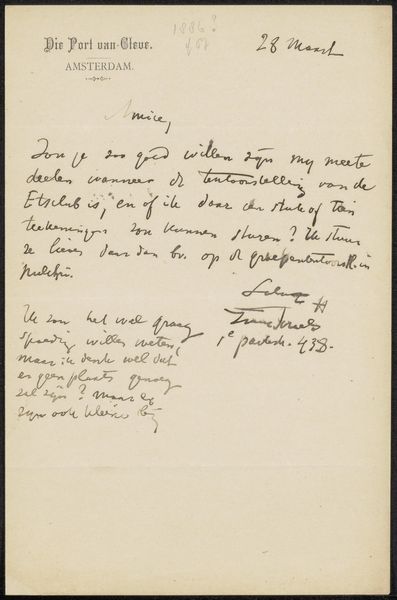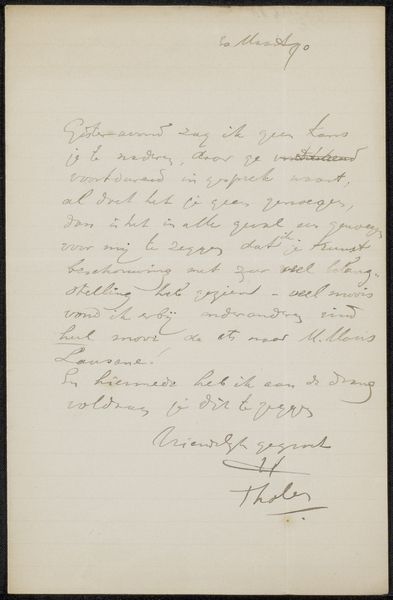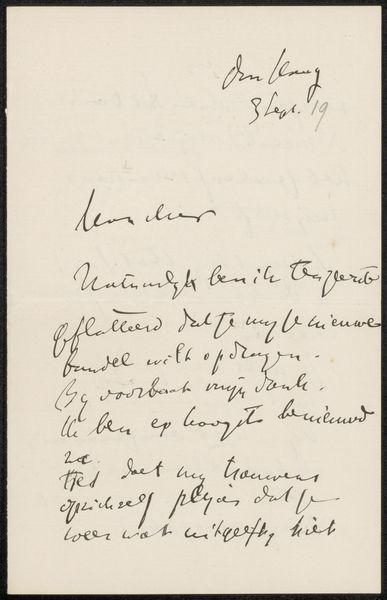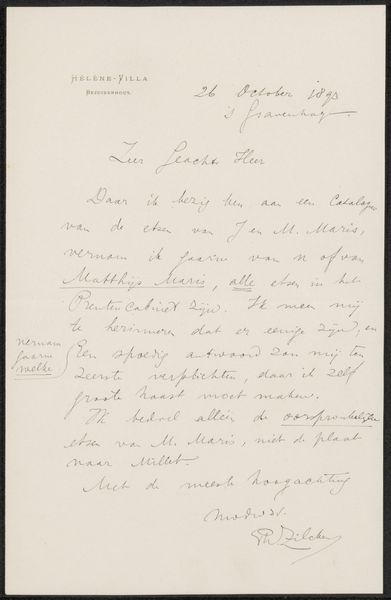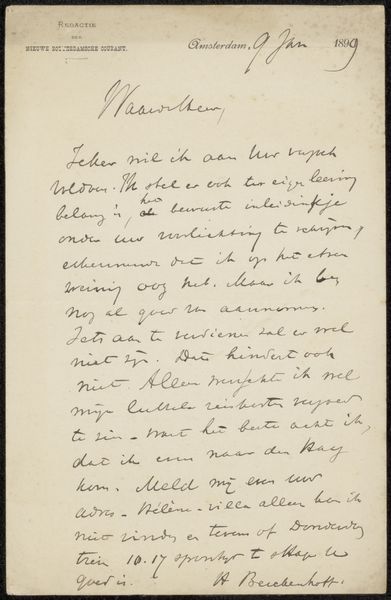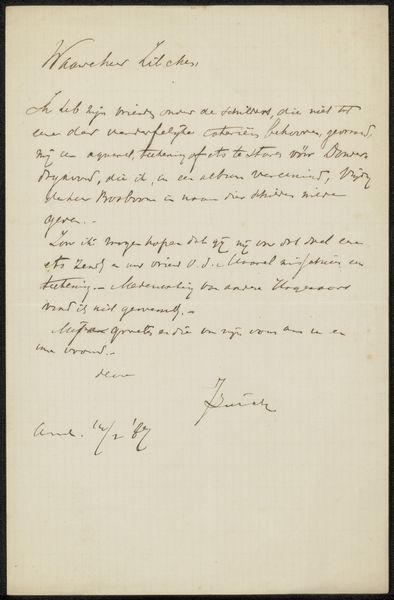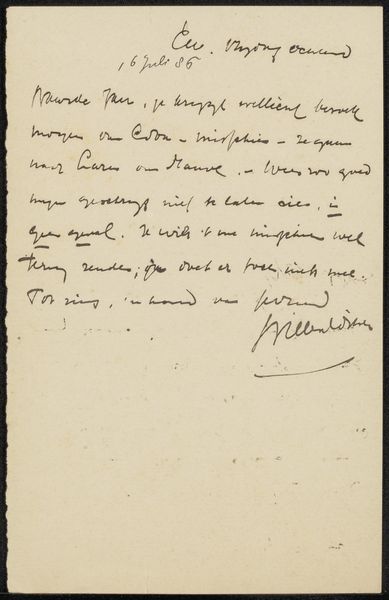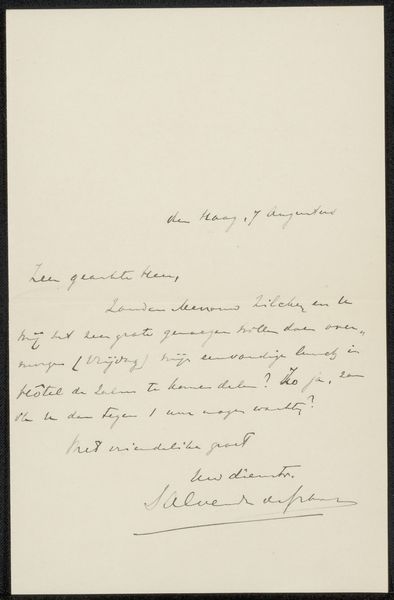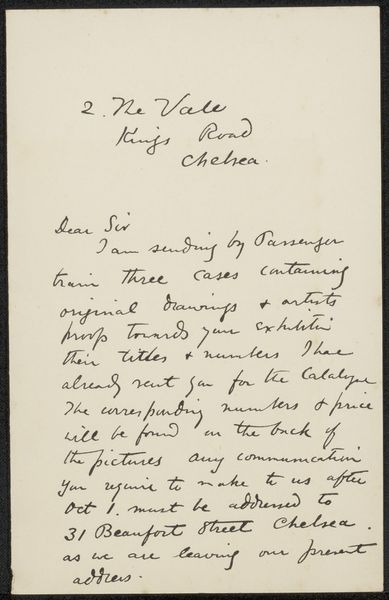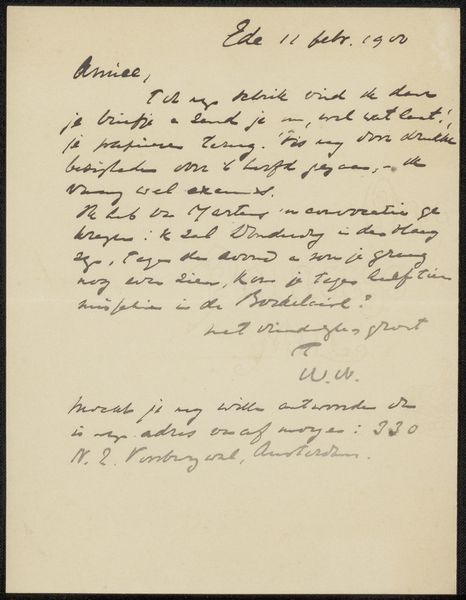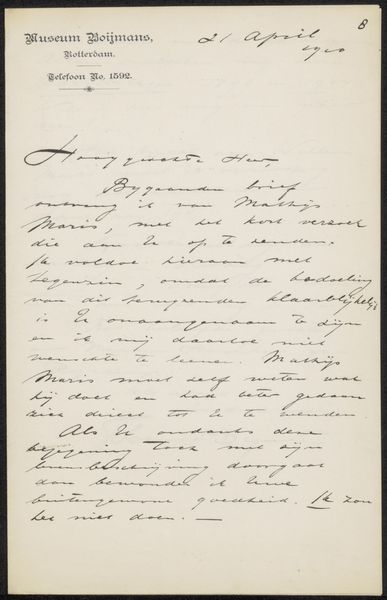
drawing, paper, ink, pen
#
drawing
#
pen sketch
#
paper
#
personal sketchbook
#
ink
#
intimism
#
pen work
#
pen
Copyright: Rijks Museum: Open Domain
Curator: Looking at this delicate work, titled "Brief aan Philip Zilcken," likely created between 1901 and 1910 by Charles Mertens, my first impression is how intimate and personal it feels. The cursive script dances across the page. Editor: Indeed. The paper, combined with the ink's fragility, gives the immediate impression of a transient, functional object, not necessarily destined for display. It emphasizes the materiality and the directness of the author's hand. What was Mertens using? A quill? Curator: Based on the consistency, I'd guess a pen, perhaps even a fountain pen, judging by the relative uniformity of the line width. Mertens was, it appears, corresponding with Philip Zilcken. Zilcken was an artist and writer and I believe a highly influential figure in the art world, especially regarding the popularization of printmaking. This letter becomes a touchpoint in understanding that relationship. Editor: The pen work shows evidence of a quick hand, probably not something he belabored. And was it written in one go? There seems to be consistency in the saturation of the ink, in its materiality. I wonder what kind of paper he's using? What its weave and watermarks might tell us? These everyday details really ground us in the period and the act of creation. It also tells us of trade and exchange during the Belle Epoque. Curator: Intimacy seems to be central here, less about any grand gesture than a private communication reflecting personal, and by extension, professional relations. This unassuming nature is what characterizes a wider 'intimism' movement taking hold at this period in Western Europe. The act of correspondence takes precedence, and yet, here it is, surviving beyond its original intent, open for public view. How about that? Editor: It certainly elevates what some might deem mere ephemera. The labor is there, it's embodied in the written word, now valued within the wider economic structures of art and display. You almost feel you are not just looking at, but somehow reading history. Curator: Exactly, these quiet exchanges reveal much about the network and art-world operations of its time. It gives us insight into who decided which people and ideas got promoted or not. Editor: In short, even the simplest of objects holds its own rich narrative of art, production, and value, one we have to continue uncovering. Curator: Precisely. "Brief aan Philip Zilcken" teaches us the value of considering these intricate, personal dynamics.
Comments
No comments
Be the first to comment and join the conversation on the ultimate creative platform.
